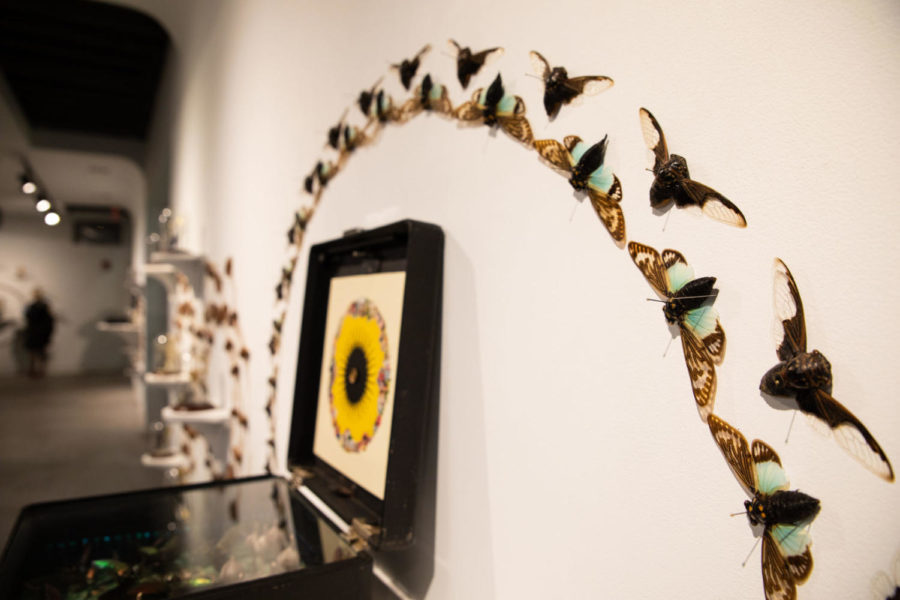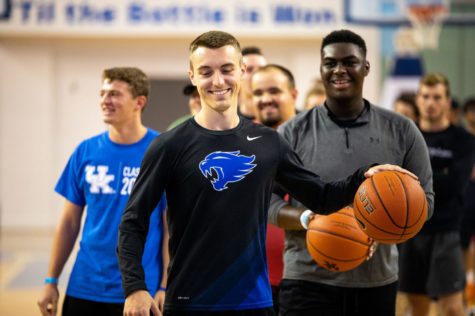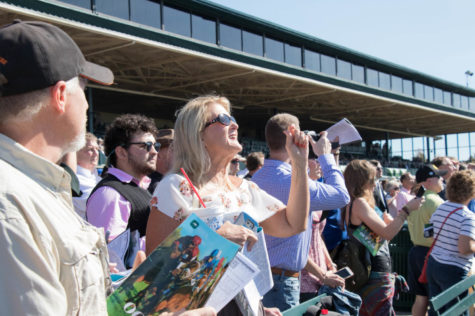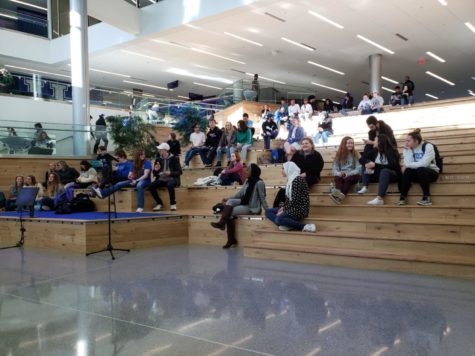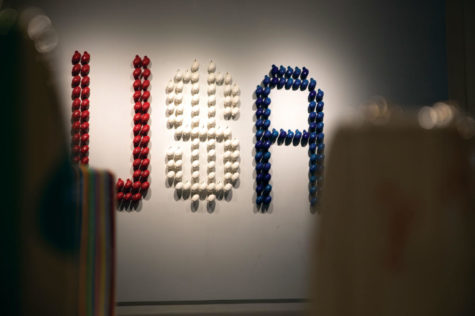Bugs and beauty on display at art gallery
January 23, 2019
For many, the thought of being in a room full of bugs fills them with terror or discomfort.
For Jennifer Angus, she feels inspiration. In over a thousand bugs, she sees art.
Angus is an artist featured as part of the School of Art and Visual Studies Visiting Artist Series. Her exhibit, Otherworldly, opened at the Bolivar Art Gallery on Jan. 6. Viewers might be surprised to find that the artist’s medium have legs and can fly.
The SA/VS Visiting Artist Series is sponsored by the Abercrombie Visiting Artist Fund, which invites visiting artists to come to campus and engage the university community. Director of the Bolivar Art Gallery Rebecca Alley said Angus’ work is beautiful, rich, layered and powerful.
“It is impactful from an overall design aspect, yet also has delightful details throughout,” Alley said.
It was the artist’s background in textile design and love for patterns that led to her work with the insect world. Spending some years in the Golden Triangle, the point where Thailand, Laos, and Myanmar meet, she was inspired by the tribal dress of the region.
“I came upon a particular garment known as ‘singing shawl,’ worn by young women of the Karen tribe, that is embellished with metallic beetle wings in place of beads or sequins,” Angus said.
Noting the development of pattern repetition in textile design, she combined that passion with a love of insects. Angus began pinning insects to the wall in patterns that mimic textiles and wallpaper, and not just a few — between 1,500 and 4,000 in most of her instillations, though sometimes a project can include twice that number.
Angus orders her insects from specimen dealers, after which she needs to “relax” the specimens. This means rehydrating them so that they become soft enough to work with, and their legs or wings can be spread enough to pin them into position.
Due to the wear and tear of the specimens, Angus said that cicadas are used more.
Collected over a period of nearly 20 years, the specimens are used over the course of many exhibitions. Angus prides herself in finding a way to reuse every insect, even if it is damaged beyond individual repair.
“Anything beyond repair I keep and make what I call ‘hybrid’ creatures. You can see some in the show [Otherworldly]—the ‘cicada ladies.’ They have a cicada head, beeswax body and grasshopper arms,” she said.
The Otherworldly instillations feature seven cases which Angus said depict the Seven Deadly Sins, referencing religious authority. Insects are also placed in small bell jars mounted on the wall, seemingly examining other insects under antique microscope slides.
“The insects within the bell jars, small compared to humans, gaze at even smaller creatures… and in the tradition of Dr. Seuss’s story ‘Horton Hears a Who’ we can imagine that perhaps there are even more minute creatures that exist that are invisible to us,” Angus said.
Cicadas tend to be most used in the artist’s work due to their ability to hold up despite the general wear and tear that comes with being used in multiple exhibitions. In Otherworldly, cicadas are used to surround the cases, in larger circular patterns, which Angus credits as being her favorite insect in this show.
“Their wings are black and clear in color and they have such a graceful line, almost like a calligraphy stroke,” she said.
The creation of patterns in the exhibit creates a unique sense of comfort that many don’t usually feel around the insects, inviting viewers to feel more pleasure as they examine the art. This is one of the reasons Otherworldly was chosen to be featured, according to Alley.
“Many people find insects unpleasant, yet she displays an enormous quantity of them in a way that makes them beautiful and fantastical,” Alley said.
Angus finds that pattern and the narrative storytelling of her work are the most unifying qualities across her projects and is perhaps what makes it so unique. In these patterns, she said viewers can observe the beauty and ingenuity of the insects without fear.
“The tight patterns are a reflection of what man has sought to do over the centuries– control mother nature,” Angus said.
The Otherworldly exhibit will be at the Bolivar Art Gallery until Feb. 6. Admission is free for all.









































































































































